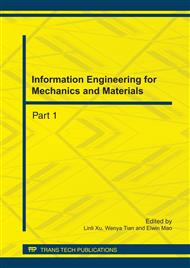p.956
p.961
p.965
p.969
p.975
p.980
p.985
p.990
p.996
The Stress Distortion Analysis of Coiler Mandrel Based on Pro/E-MECHANICAL
Abstract:
Basing on material mechaanics and the finte element method,the interrelated analysis modules of Pro/E-MECHANICAL is used to analysis the stress and distortion of the coiler mandrel,getting the weakness of the coiler mandrel and getting the location of the maximum stress and the relationship between steel rolling external diameter and stress distortion, Obtaining the maximum stress is 82.8 Ma,the maximum displacement is 0.56 mm and getting the main reason for coiler mandrel published.Basing on the finite element analysis to improve its structure, to make its service life prolong greatly.
Info:
Periodical:
Pages:
975-979
Citation:
Online since:
July 2011
Authors:
Price:
Сopyright:
© 2011 Trans Tech Publications Ltd. All Rights Reserved
Share:
Citation:


